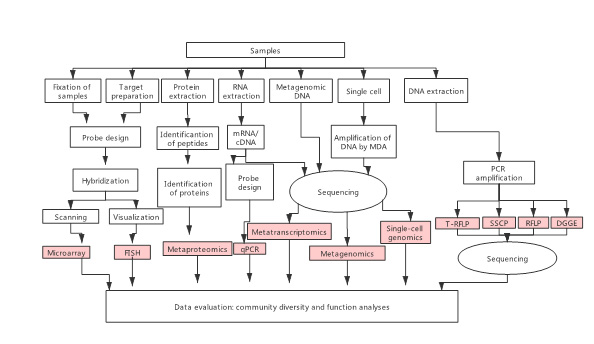Context
Microbial contamination of poultry, pork and beef carcasses occurs frequently at slaughter. It effects both food safety, due to the potential presence of pathogens, and quality due to an accelerated microbiological spoilage. There are multiple contamination routes and sources, of which some related to the animal species, some to the slaughter procedures applied, and some more related to the slaughter conditions, such as training of the staff and correct application of good hygiene practices. All determine the final bacteriological contamination load, as well as the presence and kind of hazards present. Therefore, biological hazards not only differ according the animal species slaughtered, though can also substantially vary between comparable food businesses operators, and initiated the discussion on the risk categorisation of slaughterhouses (1).
Interventions at slaughter are considered as having a major potential to reduce microbiological hazards further than what is achievable solely by adhering to Good Hygiene Practices (GHP) (1). Especially in the case of commonly occurring pathogens, such as Campylobacter in broilers, where the number of contaminated carcasses exceeds the demand of processed e.g. heat treated meat products.
Abattoir interventions can be GHP- or hazard-based measures. GHP-based measures are often founded on empirical knowledge and experience. Examples are cleaning and disinfection of slaughterhouse areas, knife-trimming, chilling, equipment sanitation. Hazard-based interventions are evidence-based, and developed from scientific research to specifically control certain hazard(s). Examples include different skin and carcass interventions mostly aiming at microbial removal, immobilisation or destruction, and provide demonstrable and quantifiable reductions in hazard loads (1,2). EU legislation allows the use of treatments to remove surface contamination during slaughter, though after following appropriate consideration and a risk assessment by EFSA, and approval of such treatments by the regulatory authorities (3).
Knowledge gap
As stated in the EU guidance document on the safety and efficacy of substances for the removal of microbial surface contamination, the effectiveness of the intervention should be demonstrated. Therefore the methods used to detect and quantify the microorganisms should be described or referenced in the procedure. To date, less attention has been paid to this specific part of the procedure, and often generally applied methods are used, without specific considerations, standardisation or evaluation of the fitness for purpose.
Furthermore, culture-independent methods such as 16S amplicon, and shot-gun sequencing, as well as whole genome sequencing have been introduced to identify and monitor the bacterial community on food products, though without realizing the limitations of such approach.

Bacterial community identification by culture-independent methods (Modified from: Su et al., 2012, Culture-Independent Methods For Studying Environmental Microorganisms: Methods, Application, And Perspective. Appl. Microbiol. Biotechnol. 93, 993–1003. Doi:10.1007/S00253-011-3800-7)
Workshop:
Homework & preparation
The participants will be divided into 2 groups and asked to prepare a list of GHP- and hazard-based interventions already or potentially applied at slaughter for beef and pork, respectively, and this coupled with the analytical methods used to assess their effectiveness (2,4). This will be based on selected literature provided by the workshop moderator.
Workshop in a virtual room
After a short introduction by Kurt, both groups will first present their findings and have a first discussion on the similarities and differences between the approaches of both animal species, and identify the commonly applied methods and procedures (including method, place and time of sampling). The advantages and disadvantages of the methods, and the suitability for the detection of general contamination and specific pathogens, in particular Salmonella, Campylobacter Yersinia will be discussed. Attention will be paid to identify the pitfalls (e.g. VBNC, prior neutralisation of decontamination substances, …), and to prepare recommendations for standardisation and proper use of culture dependent and independent methods.
Outcome of the workshop
Participants will prepare, and present on Wednesday, a short presentation with the current state of the methods applied and the identified pros’- and con’s. Recommendations will be formulated for the design and set-up of such evaluations, and knowledge gaps formulated.
References and guidance papers:
- Blagojevic, B., Nesbakken, T., Alvseike, O., Vågsholm, I., Antic, D., Johler, S., … Alban, L. (2021). Drivers, opportunities, and challenges of the European risk-based meat safety assurance system. Food Control, 124, Article 107870.
- FAO (2016). Interventions for the control of non-typhoidal Salmonella spp. in beef and pork: Meeting report and systematic review. In Microbiological risk assessment series No. 30.
- EFSA (2010). Guidance on Revision of the joint AFC/BIOHAZ guidance document on the submission of data for the evaluation of the safety and efficacy of substances for the removal of microbial surface contamination of foods of animal origin intended for human consumption. The EFSA Journal, 8(4), 1544-1575.
- Antic D, Houf K, Michalopoulou E, Blagojevic B. (2021). Beef abattoir interventions in a risk-based meat safety assurance system. Meat Science, 182:108622.

